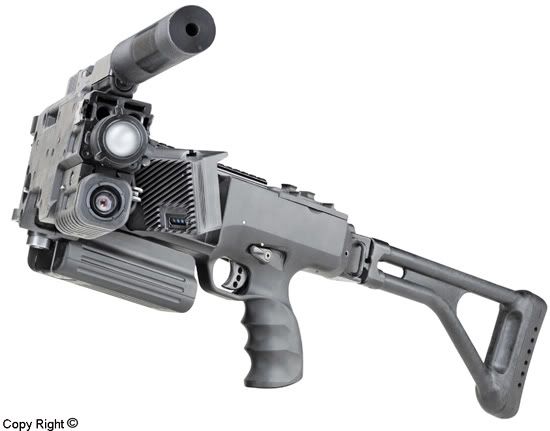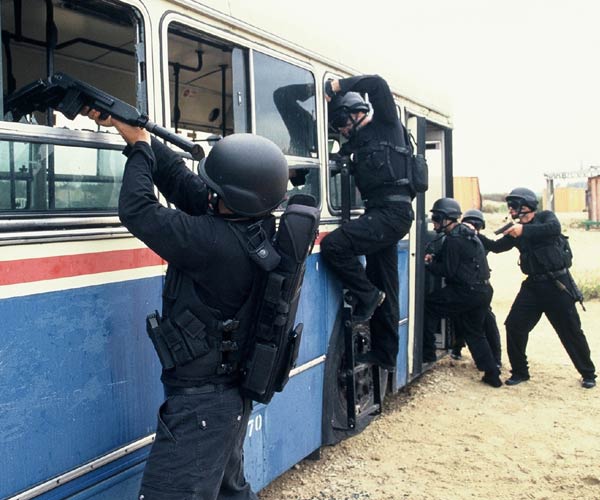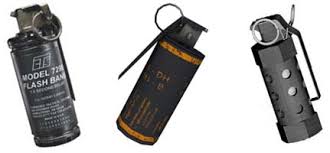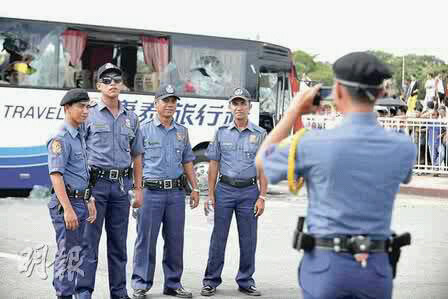| 
General Tomoyuki Yamashita
It is often said that behind every great fortune lies a great crime. The twisted tale of Yamashita's gold, allegedly buried in the Philippine islands, is a story of a great fortune and many crimes that became inseparably intertwined. The tale begins with Japan's plundering of its neighbors before and during World War II. As the Germans did in Europe, the Japanese squeezed vast fortunes from their Asian domain, creating a river of riches flowing toward the homeland. The Japanese government intended that loot pilfered from Southeast Asia would finance their war effort. This was not the haphazard looting of a rampaging army - it was a highly organized effort - perpetrated on a massive scale by some of Japans most prominent citizens; allegedly including Emperor Hirohito and yakuza gangsters such as Yoshio Kodama. Emperor Hirohito appointed his brother, Prince Yasuhito Chichibu, to head a secret organization called Kin no yuri ("Golden Lily"), to organize the looting. Golden Lily teams systematically emptied treasuries, banks, factories, private homes, temples, churches, mosques, museums pawn shops and art galleries, and stripped ordinary people of what little they had, while Japan's top gangsters looted Asia's underworld and its black economy. The stolen property reportedly included gems, golden Buddhas, coins, and precious metals of immense value. The Treasure Route Not since the Spanish conquered the Incan Empire in 1532 had the world seen such an aggressive looting campaign. This sort of enterprise took careful planning and an established network to transport the loot safely and efficiently back to the Japanese homeland. The hub of the Golden Lilly's looting network was the Philippine island of Luzon - it's strategic location and proximity to Japan made it a natural and necessary transshipment point. 
Golden Lilly's looting network
During the early days of the war the looting network functioned as planned - treasures from all over South East Asia arrived in the Philippines daily - the loot was then transferred to freighters for the trip back to Japan. But toward the end of World War II. The Allies were gaining control of the Pacific, making it increasingly difficult for the Japanese to transport the stolen treasure. Allied submarines and aircraft took a heavy toll on Japan's shipping; some of the ships carrying loot to Japan were sunk. So, instead of shipping the treasure back to Japan, Golden Lilly operatives began hiding the loot in caves and underground complexes throughout the Philippines. The Japanese believed that when the war ended they would be able to keep the Philippine Islands as a concession for peace. They would then be able to dig up the vast wealth hidden there to rebuild their failing empire. Arriving in the midst of this frenzied activity was the Philippines' new military governor, General Tomoyuki Yamashita, "the Tiger of Malaya" - a nickname he had won by conquering that complacent and ill-defended British colony. As the Allied forces closed in, General Yamashita kicked the treasure concealment campaign into high gear. Intricate tunnels Yamashita dug massive tunels in the mountains outside Manila, some to depths of hundreds of feet, leading to the final 'storage chambers'. Many of these tunnels were excavated just below the water table during the dry season, which meant that they would eventually fill with water – a deterrent to any future salvagers. And if that were't enough, most if not all of the tunnels were booby-trapped with 1,000 and 2,000 lb bombs and poisonous gas. Alied Prisoners were used to dig the intricate tunnelling systems and once the gold was safely stashed in the pits, the POWs were executed and buried along with the treasures. In rare cases, Japanese officers even had their own soldiers killed and buried along with the treasure, to protect the secret locations. Yamashita also blasted caves in coral reefs, and sank entire shiploads of valuables in the sea around the islands. But in the end all this hard work was for nothing – the Americans invaded the Philippines in October 1944. 
Map of Luzon Island - Philippines
When the Allied forces landed on Luzon there was still much treasure remaining to be buried, so General Yamashita loaded the remaining loot on trucks and took it with him as his army retreated across the island. Legend says that as Yamashita fled, he broke the treasure into many smaller stashes that were hidden along the line of his retreat, the bulk of the stashes are said to be concentrated in the mountainous area where Yamashita made his last stand against the invading US troops. Yamashita eventual surrender on September 2, 1945. According to popular lore, there are said to be 172 documented, official Japanese imperial burial sites (138 on land and 34 in deliberately scuttled ships), not to mention the numerous instances of loot buried by greedy officers and renegade soldiers. The worth of all this booty is estimated to be as much as $3 billion at 1940 rates – the equivalent of over $100 billion today. According to various post-war estimates, the gold bullion alone totals 4,000 to 6,000 tons. Many of those who knew the locations of the loot were killed during that final battle, or were later tried by the Allies for war crimes and executed. General Tomoyuki Yamashita himself was executed for war crimes on February 23, 1946 taking the secret of his treasure to the grave. Recovery Efforts Many Yamashita researchers believe that a portion of the treasure has already been recovered by various parties in the sixty years since Yamashita's Execution. A great many facts have been accumulated, maps have been found, witnesses have sworn their testimonies, but the truth remains shrouded in mystery and lies. Two of the more credible and well researched rumors of recovery are listed below: Clandestine operation The first rumor reads like a Tom Clancy Novel. It's said that, in October 1945, American intelligence agents learned where some of the Japanese loot was hidden. Agents of the O.S.S. (forerunner of the CIA) watched as Japanese troops buried treasure on the island of Luzon and once the Japanese were defeated they began a clandestine recovery operation that lasted until 1948.  Peggy and Sterling Seagrave's book, Gold Warriors: America's Secret Recovery of Yamashita's Gold (2003), Is one of the best written on the subject and a great place to start your research on this fascinating tale. The initial edition comes with CD-ROMs containing 900 megabytes of documents, maps and photographs. Peggy and Sterling Seagrave's book, Gold Warriors: America's Secret Recovery of Yamashita's Gold (2003), Is one of the best written on the subject and a great place to start your research on this fascinating tale. The initial edition comes with CD-ROMs containing 900 megabytes of documents, maps and photographs.
There were important reasons for all this secrecy. If the recovery of this huge mass of stolen gold became public knowledge, the countries and individuals that had been plundered could not lay claim to it; and the OSS/CIA had no intention of returning any of the plunder to its rightful owners. Instead, they set up numerous front companies to launder the secretly recovered gold bullion. This is supposed to have become the basis of the CIA's 'off the books' operational funds during the immediate post-war years, used to create a world-wide anti-Communist network. General William Donovan, head of the O.S.S., supposedly knew of the gold recoveries, as did General Douglas MacArthur, and former US presidents Herbert Hoover and Harry Truman. Marcos' Gold Perhaps the most credible rumor of recovery involves a young, up and coming Filipino politician named Ferdinand Marcos - who became successively a congressman, senator, president, and finally dictator of the Philippine islands. 
Ferdinand Marcos
It was rumored that Marco's rise in politics was financed in part by Yamashita's hoard. One of many stories about Marcos places him with a party of Japanese soldiers who hid gold in a tunnel at the end of the war. Then sometime in the mid 1960's he recovered $8 billion from a tunnel known as "Teresa 2", which was located 38 miles south of Manila, in the Rizal province. An interesting fact about Marcos is that he was the leader of the Ang Maharlika guerrilla force in northern Luzon during World War II. This would have put him in the center of the action as the Japanese made their final stand against Allied forces. Whether the dictator ever found Yamashita's gold is pure speculation - but it's a well documented fact that he searched diligently, freely using his presidential powers and the nation's armed forces in the hunt. When he declared martial law in 1972, Marcos took full advantage of the clout it conferred to step up his treasure-hunting efforts. Marcos even tried to employ unearthly powers in the search for gold, consulting Swedish psychic Olof Jonsson, who provided tantalizing hints to the hoard's location. In 1975, Marcos awarded himself a monopoly on underwater recovery efforts, decreeing that all future salvage operations in Philippine waters would require his personal approval. From time to time, scraps of information leaked from the Marcos inner circle indicating that the dictator did indeed find some sort of treasure. In the 1970s, Marcos hired an American, Robert Curtis, to search for buried treasure and remelt gold bullion to hide its origins. Curtis later told of seeing bars of gold "stacked from floor to ceiling" in one of the dictator's provincial palaces. "The ingots", he said, "were of a distinctive shape used around the time of World War II". ......  ...... ......
The 'gold' Buddha allegedly returned to Rogelio Roxas by Ferdinand Marcos. Roxas claimed that the Buddha he had found had been solid gold with a cavity in the removable head that contained diamonds Rogelio Roxas, a Filipino locksmith, is said to have found a one-ton, solid-gold Buddha and thousands of gold bars in a tunnel near Baguio in 1971, only to have them stolen by President Ferdinand Marcos. In 1986 Roxas sued the Marcos estate for damages, but died from poisioning on the very day he was set to testify. In 1996, a US Federal Court in Hawaii awarded Roxas' heirs a judgment of $22 billion against the Marcos estate. This was later massively reduced on appeal. Marcos was eventually overthrown in 1986; It was reported that when he fled the country, U.S. Customs agents discovered 24 suitcases of gold bricks and diamond jewelry hidden in diaper bags. In addition, certificates for gold bullion valued in the billions of dollars were allegedly among the personal properties he, his family, his cronies and business partners had surreptitiously taken with them when U.S. President Ronald Reagan provided them all safe passage to Hawaii. Going for the Gold! To this day, not one "officially accepted" Yamashita find has been documented. But despite all the disappointments and dead-ends, fortune hunters remain undaunted. Many individuals and consortia, both Filipino and foreign, continue to search for treasure sites. Before you launch your own hunt for Yamashita's Lost Gold, here are a few things to keep in mind... - Danger
Dozens have died digging up roads, riverbeds and mountainsides in a relentless pursuit of Yamashita's gold. For example, in late 2000, two men were buried alive when a tunnel collapsed near the Mindanao town of General Santos after they had dug as far as 24 feet (7.3 metres). Four others suffocated in Lumban, Laguna. And in 1998, three men were killed in Nueva Ecija in Luzon province when a tunnel they had dug caved in.
- Con Men
As many of these recovery projects have ended in failure, a side industry has emerged based on the fever itself. Foreign investors are often enticed into funding the digging of holes known to contain nothing. In areas of high unemployment, workers are happy to dig meaningless holes for two or three US dollars a day.
Con men claim to have recovered treasure but will only meet with buyers in secluded rural areas – abduction points for allegedly wealthy travellers. Others will try to sell gold-plated brass Buddhas and fake gold bars for thousands of times their actual value.
If you are tempted to take up the Yamashita challenge you might want to read this article first, which tells how a 74-year-old man lost his life savings by investing in a Yamashita scheme. Desperate race for vast riches - www.geocities.com/filipinoculture/treasure.html
- Sharing with The Man
The Philipine government has some pretty strict, and well enforced guidelines for would be treasure hunters operating in their territories. Many expeditions have been escorted by the Philipino Military, who stand guard night and day to make sure that the government gets their fair share of the treasure - which is listed below:
a) For Treasure Hunting within Public Lands – Seventy-five percent(75%) to the Government and twenty-five (25%) to the Permit Holder.
b) For Treasure Hunting in Private Lands – Thirty Percent (30%) to the Government and Seventy Percent (70%) to be shared by the Permit Holder and the landowner.
c) For Shipwreck/Sunken Vessel Recovery – Fifty percent (50%) to the Government and Fifty percent (50%) to the Permit Holder.”
Article Link: http://all-things-adventure.net/treasure/top-10-lost-treasures/yamashitas-gold | 



















 Peggy and Sterling Seagrave's book, Gold Warriors: America's Secret Recovery of Yamashita's Gold (2003), Is one of the best written on the subject and a great place to start your research on this fascinating tale. The initial edition comes with CD-ROMs containing 900 megabytes of documents, maps and photographs.
Peggy and Sterling Seagrave's book, Gold Warriors: America's Secret Recovery of Yamashita's Gold (2003), Is one of the best written on the subject and a great place to start your research on this fascinating tale. The initial edition comes with CD-ROMs containing 900 megabytes of documents, maps and photographs.
 ......
......


























































































